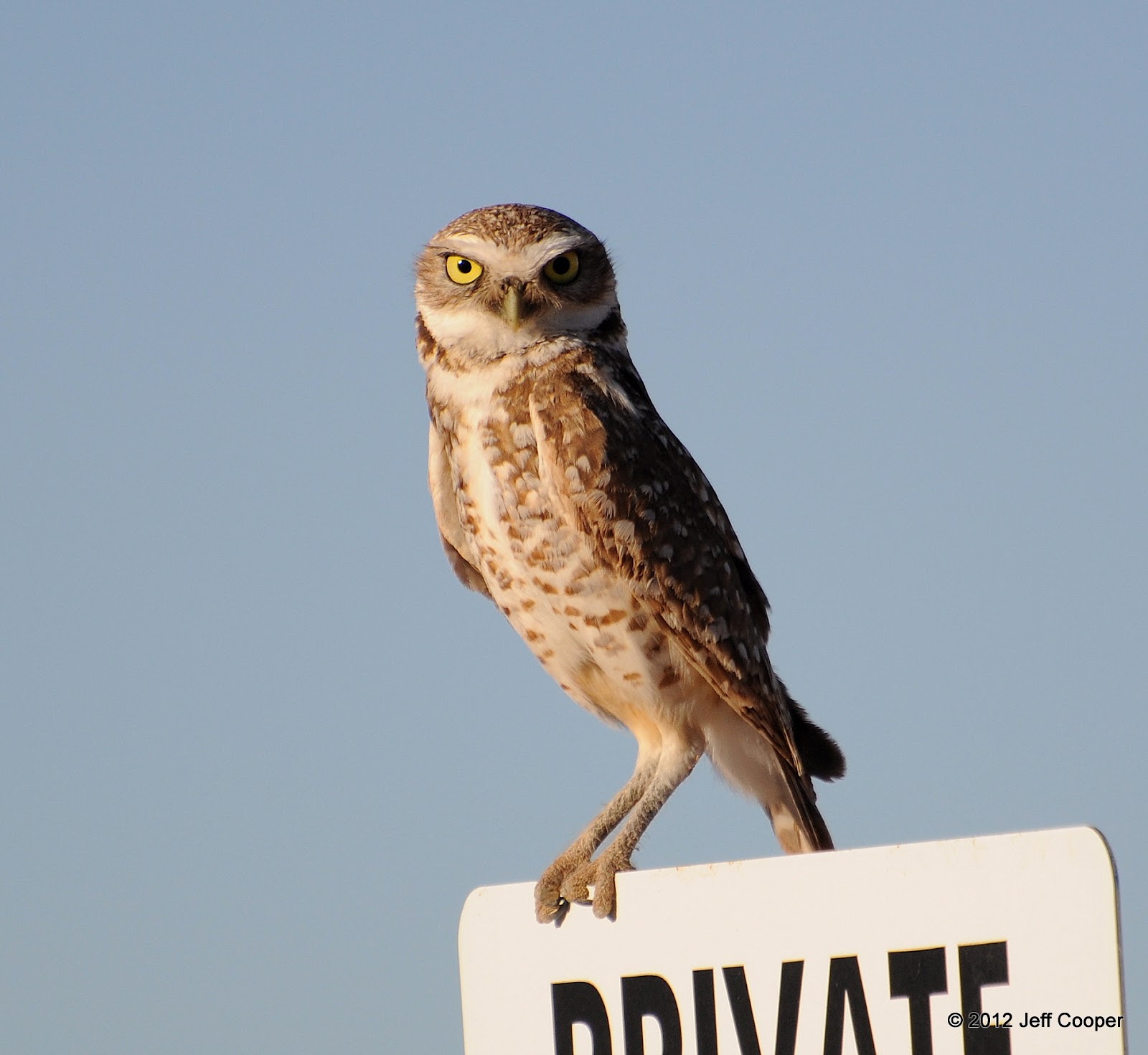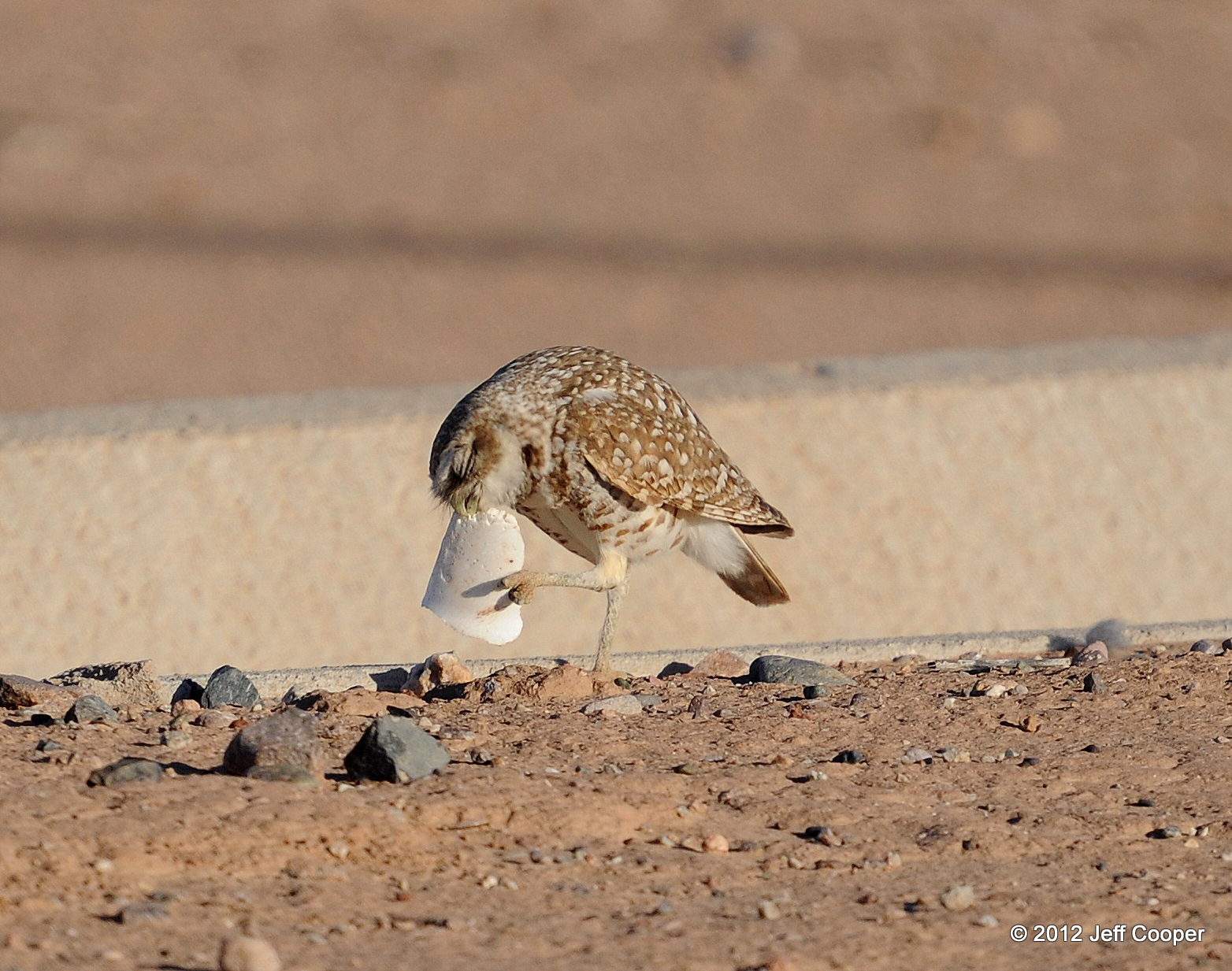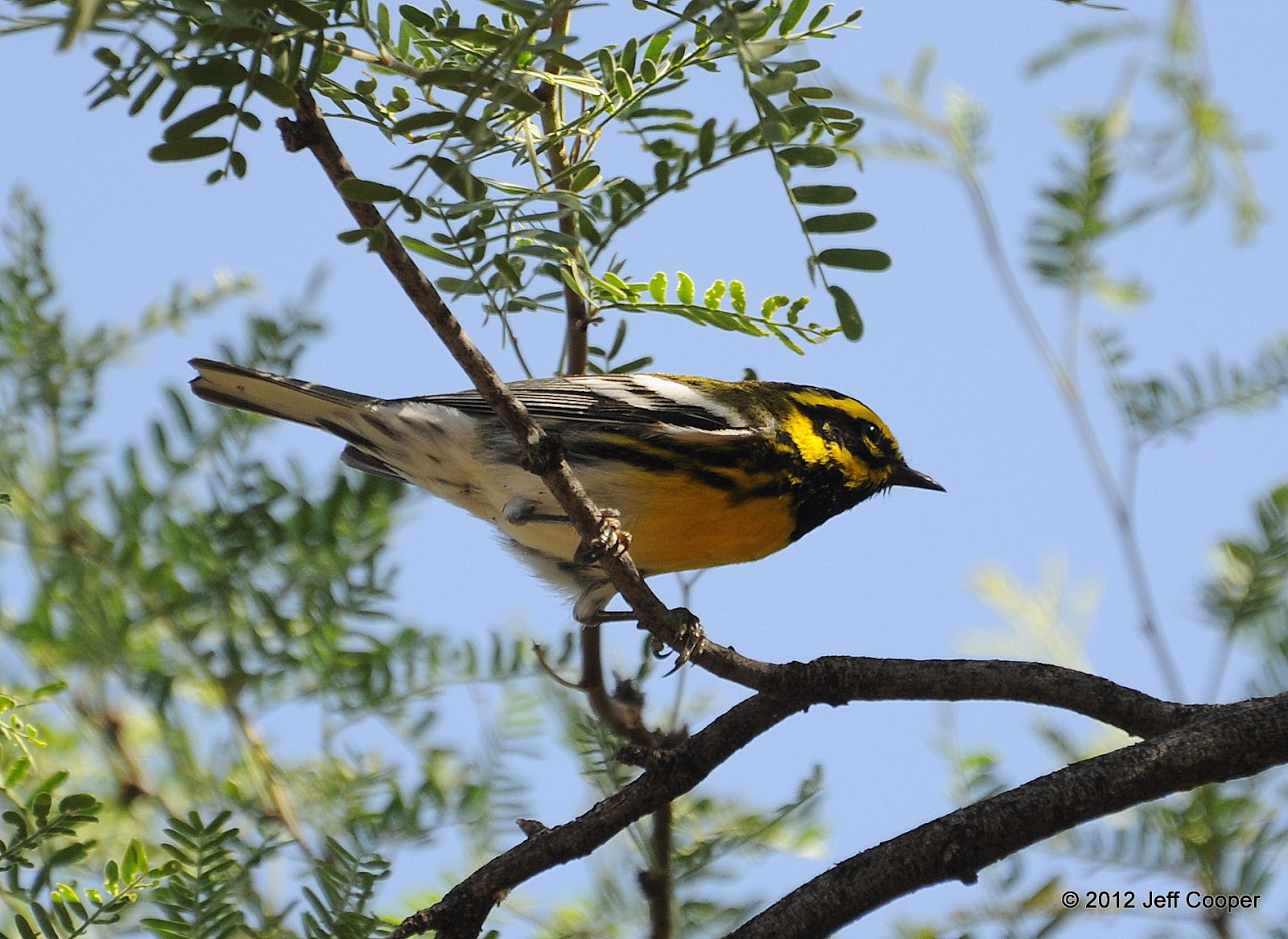This past April my wife and I made the ten hour drive from our home in Utah to Mesa, Arizona to spend some time with our daughter and her family. The weather and time away from work were really nice and I was able to spend some morning hours and a couple of evening hours searching for and photographing birds at some of the local birding hot spots. I had been to the Mesa area a time or two so I visited a couple of my regular spots such as The Riparian Preserve at Gilbert Water Ranch and Usery Mountain Regional Park. I used my Birdseye App on my iTouch and "Find Birds with eBird" from my Audubon Birds app (Android version) to locate and visit three new locations as well--Veteran's Oasis Park and the Coon Bluff and Blue Point Recreation Areas.
I had been looking forward to our first spring visit to Mesa because I had wanted to see an Elf Owl for quite some time. It would be one more addition in my ongoing quest to see and photograph all 19 species of owls in North America. I knew that they migrated from Mexico to southern Arizona in the spring to breed so I was determined to locate one. Birdseye (via eBird) indicated that several had been heard and/or seen in recent days at Coon Bluff Recreation Area so my daughter and I made the 20 minute drive from her home to Coon Bluff one night after sunset. We were successful at hearing several Elf Owls call before we had to get back to the house, but I wanted to actually see one. Consequently, I went out by myself the next night to try again. I could hear a Great Horned Owl and a Long-eared Owl. It didn't take long for the breeding Elf Owls to start calling and I quickly honed in on one that was close. Within a few minutes I was face to face with the Elf Owl below. It was one of those experiences that will remain in my mind's eye forever. I couldn't believe I was suddenly so close to one of the world's smallest owls.
 |
Elf Owl: The World's Smallest Owl Species at Coon Bluff Recreation Area in Maricopa County, AZ
(Photo by Jeff Cooper) |
The Elf Owl is primarily nocturnal and stands about 5.75 inches from head to tail. It has bright yellow eyes, no ear tufts, and prefers desert and riparian woodlands, especially near Saguaros, where it can feast on insects, centipedes, and scorpions. They will occasionally eat small lizards, snakes, and other desert animals.
Another owl opportunity presented itself in a very unexpected location. We were on our way to visit the site of the new LDS Temple in Gilbert when we took an exit that passed a small desert patch surrounded by commercial areas. I noticed the silhouette of a Burrowing Owl standing in the sand above a burrow like a tiny sentinel. I told my passengers we needed to make a u-turn because I just saw a Burrowing Owl. "A What?" was their reply. We made the turn and pulled over to discover two owls keeping watch over a burrow. I didn't have my camera at the time so I had to return the next day to capture the following images. I was glad to see a sign that made the property private and kept people from disturbing the owl burrow.
 |
| Burrowing Owl on Private Property Sign Near Owl Burrow in Gilbert, AZ (Photo by Jeff Cooper) |
I don't know why, but this Burrowing Owl spent some time nibbling on a styrofoam cup? Was it bored, hungry, or what? Regardless, I was amused as I watched it manipulate the cup with one foot while standing on the other.
 |
| Boredom, Hunger, Some Other Reason? Burrowing Owl Chewing Styrofoam in Gilbert, AZ (Photo by Jeff Cooper) |
 |
| Boredom, Hunger, Some Other Reason? Burrowing Owl Chewing Styrofoam in Gilbert, AZ (Photo by Jeff Cooper) |
 |
| Boredom, Hunger, Some Other Reason? Burrowing Owl Chewing Styrofoam in Gilbert, AZ (Photo by Jeff Cooper) |
I was also pleasantly surprised to come upon a Killdeer that chose the rocks in an church parking lot for a nest spot. It was just feet away from parking stalls.
 |
| Killdeer on Nest in LDS Church Parking Lot in Mesa, AZ (Photo by Jeff Cooper) |
The Riparian Preserve at Gilbert's Water Ranch included a life bird for me and what I think was a rare bird for the area, a Clay-colored Sparrow.
 |
| Clay-colored Sparrow at the Riparian Preserve at Gilbert Water Ranch in Gilbert, AZ (Photo by Jeff Cooper) |
 |
| Clay-colored Sparrow at the Riparian Preserve at Gilbert Water Ranch in Gilbert, AZ (Photo by Jeff Cooper) |
Another life bird for me, assuming I am correct on this ID, was Bendire's Thrasher. It stayed deep in the trees so it was a tough subject, but here is one of the better shots. Please comment on this at the bottom of the post if you feel you can confirm or correct the ID.
 |
Bendire's Thrasher (?) at Usery Mountain Regional Park in Maricopa County, AZ (Photo by Jeff Cooper)
Possibly a young Curve-billed Thrasher |
Daytime at Coon Bluff Recreation Area offered nearly 50 species of desert birds. Below are a few of the images I captured.
 |
| Tail-less Black Phoebe at Coon Bluff Recreation Area in Maricopa County, AZ (photo by Jeff Cooper) |
 |
| Bronzed Cowbird at Coon Bluff Recreation Area in Maricopa County, AZ (photo by Jeff Cooper) |
 |
| Migrating Chipping Sparrow at Coon Bluff Recreation Area in Maricopa County, AZ (photo by Jeff Cooper) |
 |
| Juvenile Common Raven (beard feathers not yet developed) Near Coon Bluff Recreation Area in Maricopa County, AZ |
 |
| Migrating Townsend's Warbler at Coon Bluff Recreation Area in Maricopa County, AZ (photo by Jeff Cooper) |
 |
| Migrating Townsend's Warbler at Coon Bluff Recreation Area Maricopa County, AZ (photo by Jeff Cooper) |
My first visit to Veteran's Oasis Park in Chandler, AZ included more Burrowing Owls and my first encounter with recently hatched Green Herons. Here some Heron and Egret images from the park along with a decent pose from a Great-tailed Grackle displaying it great tail.
 |
| Great Blue Heron at Veteran's Oasis Park in Chandler, AZ (Photo by Jeff Cooper) |
 |
| Great Egret at Veteran's Oasis Park in Chandler, AZ (Photo by Jeff Cooper) |
 |
| Great-tailed Grackle Displaying its Great Tail at Veteran's Oasis Park in Chandler, AZ (Photo by Jeff Cooper) |
 |
| Green Heron at Veteran's Oasis Park in Chandler, AZ (Photo by Jeff Cooper) |
 |
| Green Heron at Veteran's Oasis Park in Chandler, AZ (Photo by Jeff Cooper) |
 |
| Recently Hatched Green Herons at Veteran's Oasis Park in Chandler, AZ (Photo by Jeff Cooper) |
To keep this post from getting too much longer I'll share a variety of images from The Riparian Preserve at Gilbert Water Ranch, Usery Mountain Regional Park (northeast of Mesa), Blue Point Recreation Area, and Surprise, AZ where the Greater Roadrunner below was certainly a pleasant surprise!
 |
| Greater Roadrunner near Surprise, AZ |
 |
| Black-tailed Gnatcatcher at Blue Point Recreation Area in Maricopa County, AZ (Photo by Jeff Cooper) |
 |
| Gilded Flicker on Saguaro at Usery Mountain Regional Park in Maricopa County, AZ (Photo by Jeff Cooper) |
 |
| Female Gambel's Quail on Saguaro at Usery Mountain Regional Park in Maricopa County, AZ (Photo by Jeff Cooper) |
 |
| Ash-throated Flycatcher at Usery Mountain Regional Park in Maricopa County, AZ (Photo by Jeff Cooper) |
 |
| Ash-throated Flycatcher at Usery Mountain Regional Park in Maricopa County, AZ (Photo by Jeff Cooper) |
 |
| Canyon Towhee at Usery Mountain Regional Park in Maricopa County, AZ (Photo by Jeff Cooper) |
 |
| Curve-billed Thrasher on Saguaro at Usery Mountain Regional Park in Maricopa County, AZ (Photo by Jeff Cooper) |
 |
| Curve-billed Thrasher at Usery Mountain Regional Park in Maricopa County, AZ (Photo by Jeff Cooper) |
 |
| Northern Cardinal at Blue Point Recreation Area in Maricopa County, AZ (Photo by Jeff Cooper) |
 |
| Phainopepla at Blue Point Recreation Area in Maricopa County, AZ (Photo by Jeff Cooper) |
 |
| Turkey Vulture at Blue Point Recreation Area in Maricopa County, AZ (Photo by Jeff Cooper) |
 |
| Verdin at The Riparian Preserve at Gilbert Water Ranch in Gilbert, AZ (Photo by Jeff Cooper) |
 |
| Verdin at The Riparian Preserve at Gilbert Water Ranch in Gilbert, AZ (Photo by Jeff Cooper) |
 |
| Canada Goose Goslin at The Riparian Preserve at Gilbert Water Ranch in Gilbert, AZ (Photo by Jeff Cooper) |
 |
| Green Heron Fishing (nature doesn't always allow a perfect frame) at The Riparian Preserve at Gilbert Water Ranch in Gilbert, AZ (Photo by Jeff Cooper) |
 |
| Cactus Wren at Usery Mountain Regional Park Maricopa County, AZ (Photo by Jeff Cooper) |